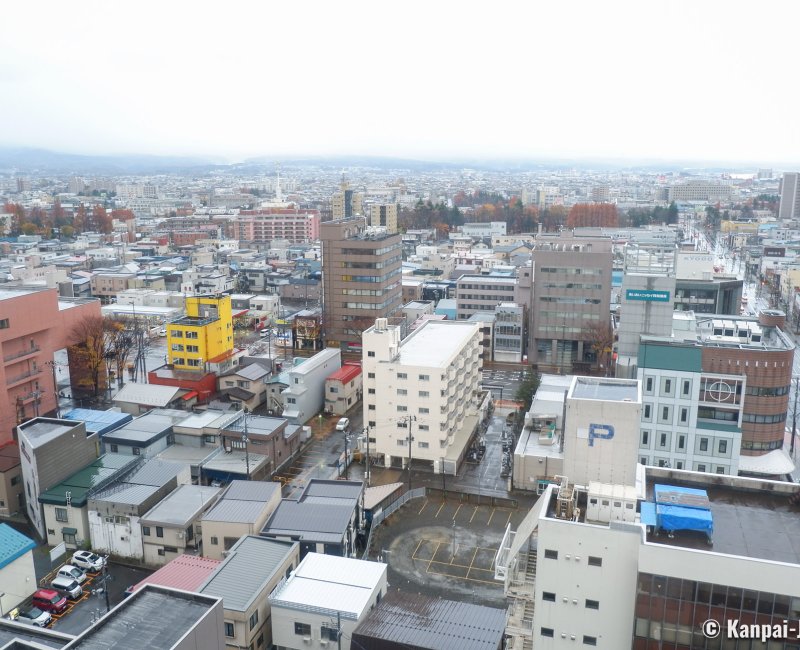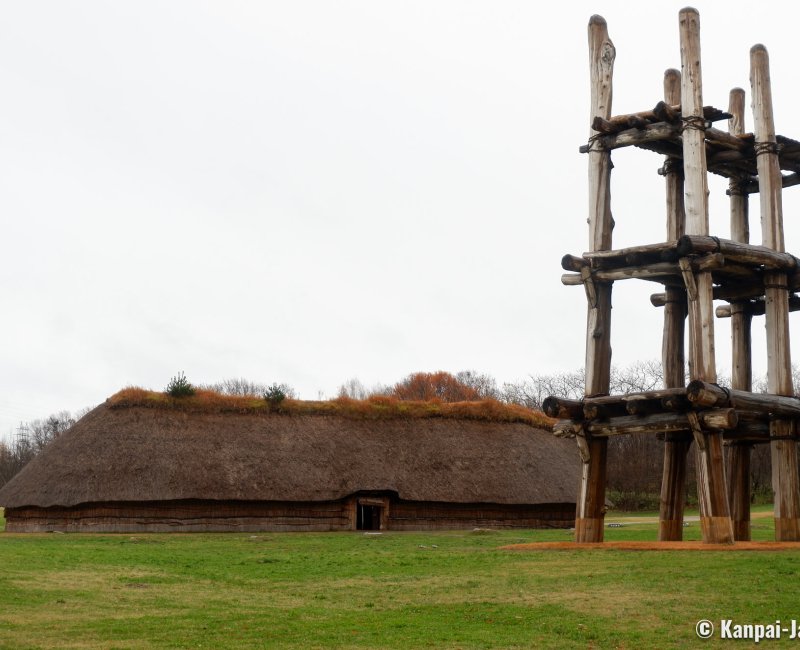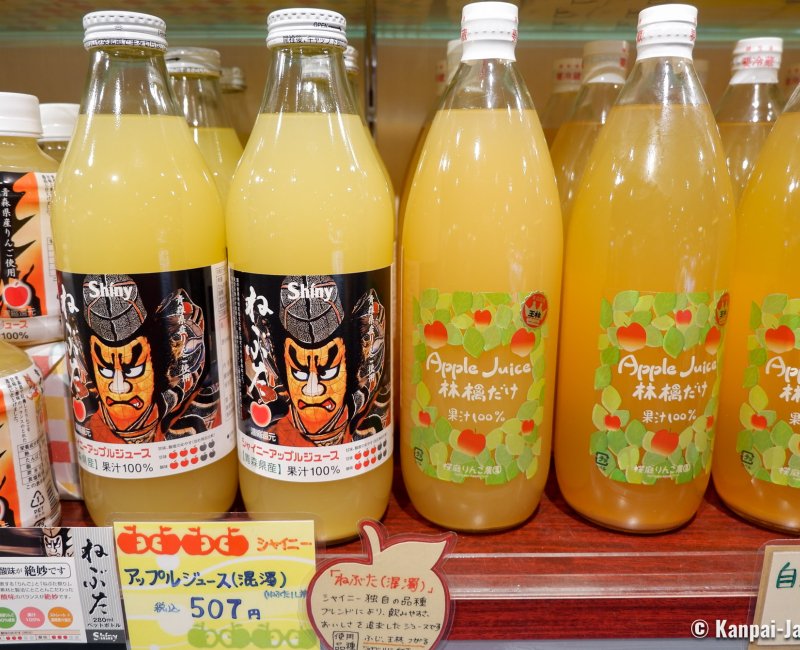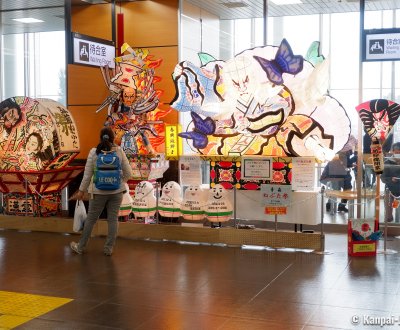Aomori
The Capital in Northern Tohoku
Aomori is a prefecture capital located at the northernmost end of the Tohoku area facing Hokkaido, on Japan’s main island Honshu. Its port is renowned for delicious fishes and seafood and the city boasts an attractive historical heritage dating back to prehistorical times, as well as the famous Nebuta Matsuri summer festival. Surrounded by green lush wilderness in summer, it is one of the most snowy Japanese cities in winter.
The blue of the ocean and the green of the forested mountains surrounding the city perfectly reflect its name Aomori, which means "blue forest". Recently raised to the status of prefecture capital (instead of Hirosaki), and yet still a human-scale city, Aomori is nevertheless in a remote location ruled by the ubiquitous nature and a relatively difficult climate, such as:
- Tough and very snowy winters; followed by,
- Humid summers; and,
- Cold winds all year round.
Aomori’s downtown is hugging a cove in Mutsu Bay and is leaning on the Hakkoda Mountains located in the northern part of the Towada-Hachimantai National Park and accessible by cable car 🚙. Almost entirely wiped out by WWII aerial bombing in July 1945, the city offers nowadays a rather flat urban landscape, mainly made of residential and industrial neighborhoods without any particular charm.

Located at the junction between Honshu and Hokkaido islands, Aomori became a transport hub to the north of Japan. Thus:
- Shin-Aomori Station has a direct connection to Tokyo in a little bit more than 3 hours by the Hayabusa Shinkansen, that also connects to Shin-Hakodate-Hokuto via the underwater Seikan Tunnel;
- The local station connects Aomori to the prefecture’s cities, such as Hirosaki (Ou JR Line) and Hachinohe (with the private company Aoimori Tetsudo);
- The Tsugaru Kaikyo ferry ⛴️ sails several times a day every day to Hakodate; and,
- Aomori airport receives domestic flights from several large Japanese cities.
The city is also the gateway to several protected natural sites, such as:
- Shirakami-Sanchi that is home to East Asia’s oldest and largest beech forest;
- The rock formations Hotokegaura on the western side of Shimokita peninsula; and,
- The sacred mountain Osore-zan.
Regarding accommodations, hotels 🏨 can be found in the surroundings of the stations, and ryokan traditional inns in Asamushi Onsen ♨️ thermal resort, the hot spring 🌸 closest to Aomori, in the east of the city center. Located along the bay, its beach 🏖 facility becomes a local seaside destination in summer.

An important historical and cultural heritage
Inhabited since the Jomon period, Aomori is one of the prehistorical cradles of the Japanese civilization and therefore is home to the archaeological site of Sannai Maruyama enlisted in the UNESCO World Heritage since 2021.
The city is moreover fostering an important cultural heritage renowned throughout the archipelago. The flagship event is the yearly great Nebuta Matsuri festival that takes place each summer from August 2 to 7, when traditional floats are exhibited in the streets in a wonderful and impressive procession at nightfall. The huge float structures are made of washi paper, lit-up from the inside, and pushed by the inhabitants clothed in the festive haneto garment. A great event in the Tohoku, this matsuri attracts on average 3 million visitors each year and all the accommodations in the area are fully booked up to 1 year in advance.
When visiting Aomori at another time of the year, we highly recommend dropping by its museums, including:
- The Nebuta Museum WA-RASSE, hosting a permanent exhibition of the Nebuta Matsuri. One can admire and watch closely the festival’s floats and listen to its traditional musics and songs;
- Aomori Museum of Art, with an interesting semi-buried architecture, dedicated to contemporary art with displays of artworks by Marc Chagall (1887 - 1985) or Wassily Kandinsky (1866 - 1944), and regional artists such as Gosei Abe (1910 - 1972) and trendy Yoshitomo Nara.
In the east of the city, Seiryu-ji temple is home to Showa Daibutsu, the largest sitting bronze Buddha in Japan. Interestingly, Aomori’s tourists information center is hosted in a peculiar building looking like a pyramid on the seaside, near the local station.

A rural and gourmet prefecture
Protected by Mutsu Bay, which is located between the Pacific Ocean in the east and the Sea of Japan in the west, the activity of the fishing port has been thriving for centuries and makes this place in the northernmost end of the Tohoku the ideal location to enjoy a delicious nokke-don. This local donburi consists of white rice generously topped with Aomori’s sea food, especially scallops, squid, urchin and Oma red tuna. In the city center, we particularly recommend the popular Furukawa Fish Market, also called Aomori Gyosai Center (青森魚菜センター).
Aomori prefecture is also a rural area, and is renowned in Japan for its apple production. The picking period covers September to November, and Aomori’s specialty fruit is then available in many delicious food and drinks, such as:
- Apple juice;
- Apple cider;
- Shikanai Senbei cakes; and,
- Jam.
Shopping centers like A-Factory, located next to the WA-RASSE Museum, and the Aomori Shunmi Kan connected to Shin-Aomori JR station, are 2 interesting places for shopping in Aomori and bring back nice omiyage souvenirs.


